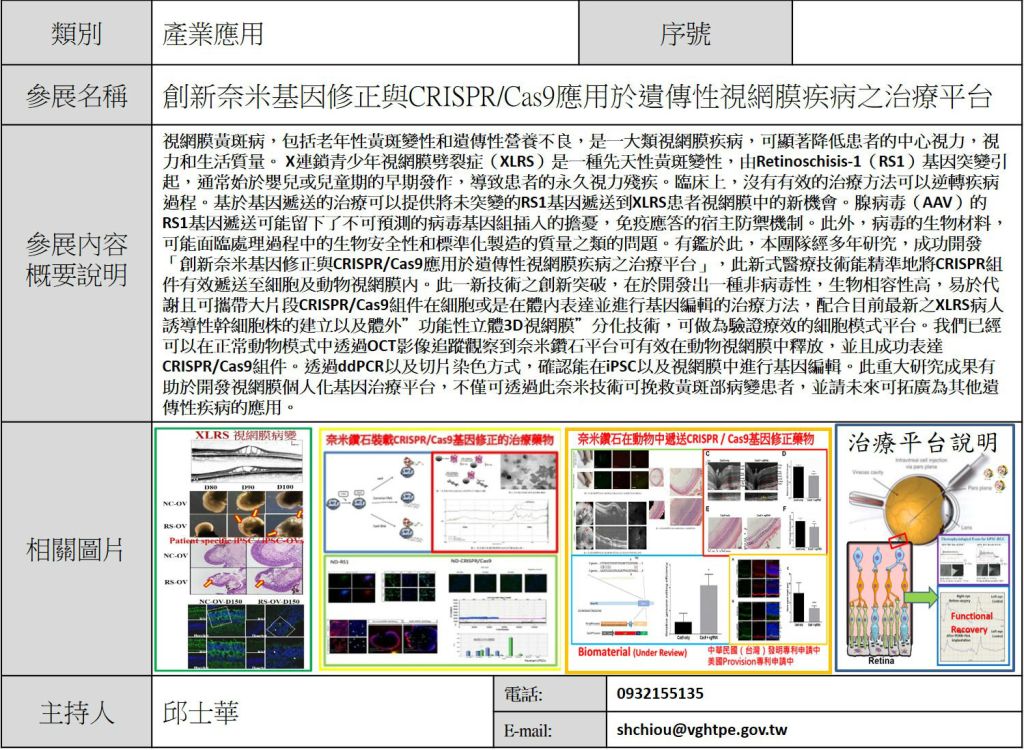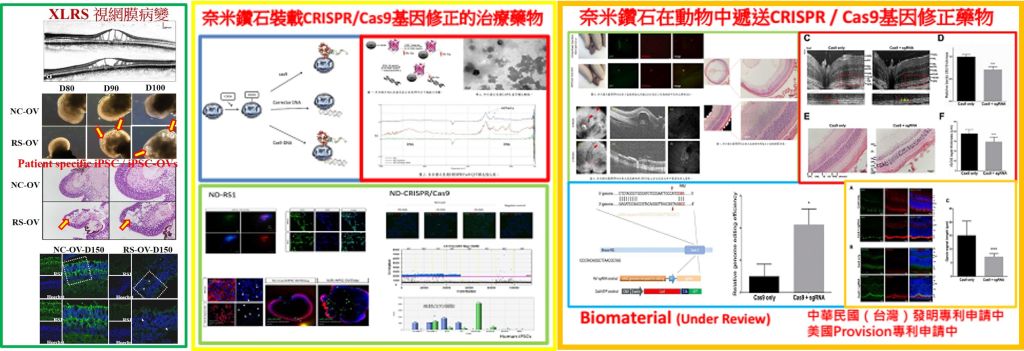| Technical Name | Innovative Nanogene Correction and CRISPR/Cas9 for the Treatment of Hereditary Retinal Diseases | ||
|---|---|---|---|
| Project Operator | National Yang-Ming University | ||
| Project Host | 邱士華 | ||
| Summary | NDs carrying the RS1 gene-editing platform can enter human iPSC and perform gene editing; animal experiments have also shown that this platform can enter the retina and edit the RS1 gene, causing changes in the retina. In addition, the establishment of XLRS patient-PSCs and in vitro "functional 3D retinal" differentiation technology can be used as a cell model platform to verify. |
||
| Scientific Breakthrough | 1. Non-viral and highly biocompatible |
||
| Industrial Applicability | Our technology is curable and highly bio-safe and can be standardized and produced in large quantities. Gene therapy will have a breakthrough impact. Effective therapeutic drugs will be developed for hereditary diseases, and iPSC will be used as a testing platform for different diseases. In addition, cooperation will be carried out to enhance the technology of gene editing therapy |
||
| Keyword | Hereditary disease Retina nanodiamond human induced pluripotent stem cells CRISPR Gene therapy Gene editing nanomedicine Non-viral vector Precision Medicine | ||
- shchiou@vghtpe.gov.tw
other people also saw







